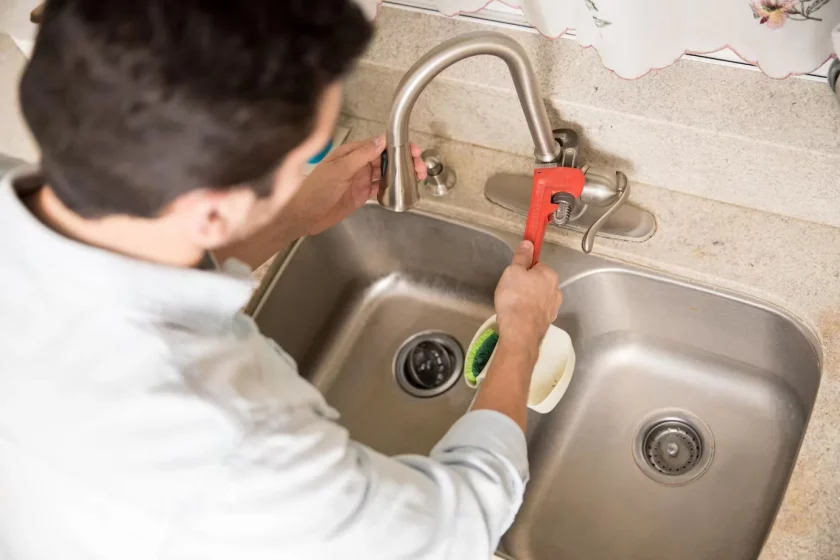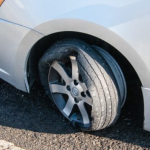One of the most common household issues that we all have faced at least once in our lives is a leaking faucet. It may seem like a minor problem that can be easily fixed by tightening a bolt or replacing a washer, but did you know that a leaky faucet can waste up to thousands of liters of water annually? This significantly increases your water bill and contributes to the wastage of a valuable natural resource. Therefore, understanding the causes of leaky faucets and taking the necessary steps to fix the issue is crucial for every home.
A leaky faucet may seem harmless, but it can have severe consequences. The sound of dripping water may seem insignificant, but it can cause a disturbance to your peace of mind, especially if it’s in the middle of the night. In addition, the constant dripping of water can lead to water stains on sinks or countertops, which look unsightly and damage the surface.
There are many more causes of leaky faucets than you might think. Here are the main 5 causes:
A Damaged Cartridge
The cartridge is a valve that controls water flow into the faucet spout. Over time, the cartridge can become damaged due to wear and tear, mineral buildup, or other factors. When this happens, water can leak out of the faucet even when the handle is turned off.
If you suspect your faucet cartridge is damaged, there are a few signs to look for. First, you may notice that the faucet is dripping water even when the handle is turned off. You may also notice that the water pressure is lower than usual, or that the water needs to come out of the faucet evenly. If you see any of these signs, it’s essential to immediately prevent further damage to your faucet.
One option for fixing a damaged cartridge is to replace the entire faucet. However, this can be expensive and time-consuming. A more cost-effective solution is to replace the damaged cartridge itself. While this may sound daunting, it’s a relatively simple process that you can do yourself with some basic tools and some know-how.
Broken Washers
When the faucet is turned off, the washer creates a tight seal that prevents water from flowing through. Over time, the constant friction between the washer and the valve seat can cause the washer to wear out or break. This can result in water leaking through the faucet even when turned off.
If a washer is the right size or needs to be installed properly, it can also cause a leaky faucet. A washer that is too small may not create a tight seal, while a washer that is too large may not fit properly and cause the faucet to leak.
Fortunately, fixing a leaky faucet caused by a broken washer is typically simple and inexpensive. In most cases, all that is needed is a replacement washer. Using the correct size and type of washer for your faucet is important to ensure a tight seal and prevent future leaks.
If you are experiencing a leaky faucet, addressing the issue as soon as possible is important to prevent water waste and save on your water bill. Contact a professional plumber (Rørlegger Oslo anbefaling) if you are unsure how to fix the issue or if the problem persists after replacing the washer.
Water Pressure
When the water pressure in your home is too high, it can cause the rubber washers and gaskets inside your faucets to wear out faster than usual. This can cause leaks to occur. You may notice that the leaks only happen when you turn on the faucet or move the handles a certain way. This is because the pressure on the washer or gasket is increased when the water is turned on, or the handles are moved, causing the water to leak out.
The first step in fixing leaky faucets caused by high water pressure is to check the pressure in your home. You can purchase a water pressure gauge from your local hardware store or call a plumber to do it for you. If the pressure is too high, install a pressure-reducing valve (PRV) on your main water line to regulate the pressure.
Another solution is to replace the washers and gaskets inside your faucet with ones designed to withstand higher water pressures. A plumber can do this or you can do it yourself if you have the necessary tools and knowledge.
Malfunctioning O-Ring
An O-ring is a small disc in the sink’s faucet. It is attached to the stem screw, which holds the faucet handle in place. O-rings are designed to create a tight seal between the faucet’s handles and body. However, O-rings can get worn out or loose over time, leading to leaks.
If one of your faucets handles leaks, it’s most likely due to a malfunctioning O-ring. Fortunately, fixing this issue is relatively simple and can be done independently with just a few tools.
To fix a leaky faucet caused by a malfunctioning O-ring, start by turning off the water supply to the faucet. Next, remove the faucet handle by unscrewing the stem screw that holds it in place. You may need to use pliers or a wrench to loosen the screw.
Deteriorated Valve Seat
To determine if a deteriorated valve seat is the cause of your leaky faucet, you can perform a simple test. First, turn off the water supply to the faucet. Next, remove the handle and any decorative caps or covers. Use pliers to remove the retaining nut and gently lift the stem from the faucet body. Inspect the valve seat for any signs of corrosion or damage. If it appears deteriorated, it will need to be replaced.
Replacing a valve seat can be tricky, and it’s best to leave it to the professionals. A licensed plumber can quickly and efficiently replace the valve seat and any other damaged components, ensuring your faucet works properly.
In addition to replacing the valve seat, there are steps you can take to prevent it from deteriorating in the first place. Regularly cleaning your faucet and removing any sediment buildup can help extend the life of the valve seat. Using a water softener can also help prevent mineral buildup, which can cause corrosion.
At Nutshell
In conclusion, a leaking faucet can cause many problems, from wasting water and increasing your water bill to disturbing your home. By understanding the main causes of leaky faucets, such as worn-out washers, corroded pipes, loose parts, high water pressure, and faulty installations, you can take the necessary steps to fix the issue and prevent further damage. Remember, even a minor leak can lead to major consequences, so it’s always best to address the problem immediately.





